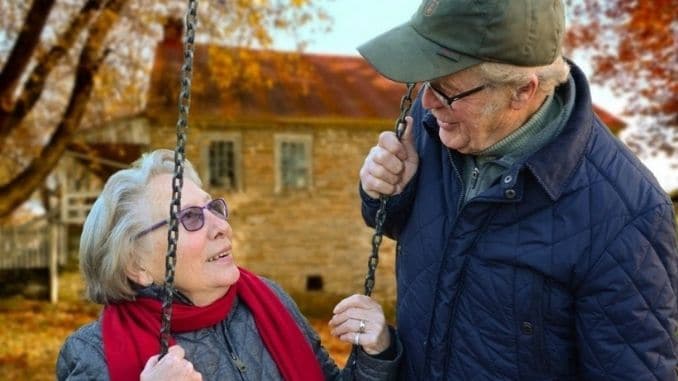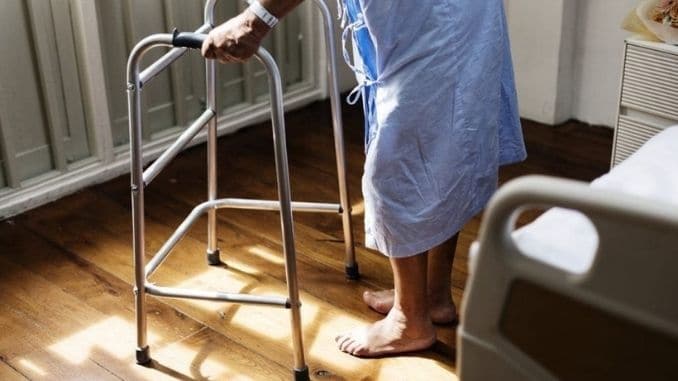
The Population Reference Bureau reports that the number of Americans age 65 and older is projected to more than double from a current 46 million to more than 98 million by the year 2060. The percentage of people 65 and older will also rise from 15 percent to nearly 24 percent.
Meanwhile, the United States Census Bureau notes that many elderly people live alone. Among both genders, the likelihood of living alone increases with age, and while some people face health issues, about two in three age 75 and older still felt in good health.
Still, healthy or not, aging takes its toll on the body, and seniors are likely to have more difficulties with everyday living than those in their younger years. Climbing stairs can become a challenge and the risk of a fall increases. Retirement communities can be good options for some as they offer social activities as well as readily available care. However, according to surveys, most people age 50 and older want to “age in place.”
If you or a loved one is looking at staying in the home for as long as possible, there are modifications you can make that will create a safer and more supportive environment. Making these changes will give you and your loved one peace of mind and help extend the years of independent living.
First, Assess the Home
Before you start making modifications, it helps to do a thorough assessment of the home to see exactly where the dangers are. Such an assessment is advised as early as possible while the individual is still getting around well, so that changes can be made gradually and economically.
Essential Home Modifications for Seniors: When looking around the home, consider how the person uses his or her surroundings. Is the bedroom used only for sleeping or for watching television and taking meals too? Is the living room only for leisure time or does your loved one sometimes sleep in a recliner or on the sofa? Will the doorways accommodate a walker or wheelchair if needed? Does the person have difficulty with any tasks like preparing meals, washing dishes, personal hygiene routines or caring for a pet? Are there fall hazards about like small rugs, wires or decorative objects?
Look around the outside of the home too. Is the lighting sufficient? Are there plants or shrubs crowding the walkways? Clutter that may be a safety hazard? Steps that may become too difficult later on?
If you’re not sure you can make these modifications on your own, there is help available. A certified aging-in-place specialist (CAPS), for example, or an occupational therapist can help assess the home and recommend needed modifications.
30 of the Most Common Home Safety Modifications
Essential Home Modifications for Seniors: Once you’ve finished the home assessment, you can prioritize those modifications that will have the largest impact first, and then make the others gradually as you go along. Below, we have 30 of the most commonly made changes that help seniors to live more safely and comfortably in their homes.
Outdoors
- Make the address visible. Make sure the address is clearly visible on the mailbox and the home so that emergency responders can find it quickly if necessary.
- Ensure good lighting. Check the outside lights to make sure they are bright and illuminate the walkway to the door properly. Install light fixtures with sensors that will turn lights on at dusk and off at dawn or when motion is detected.
- De-clutter. Entrances to the home should be free of clutter, and the exterior pathways should be free of holes, uneven pavement or other items that may increase the risk of tripping.
- Consider handrails and ramps. If it’s necessary to climb steps to get into the home, consider installing ramps and handrails to make it easier for an older adult to use a walker or wheelchair.
- Widen doorways. Is your front door wide enough to accommodate a wheelchair? If not, it may be worth it to widen it so that it can.
Kitchen
- Are the major tools accessible? Older people can struggle to get things from high or low cabinets. Make sure that all the regularly used tools and dishes are stored in cabinets that are accessed easily.
- Can you work sitting down? In most kitchens, it’s assumed that you’ll prepare food and cook standing up, but seniors may not be able to stand for long periods of time. Make sure there is an area where the person can work while seated. You could install a pullout work surface, use a table and barstool or remove a lower cabinet so the person can pull a chair up to the countertop.
- Make sure the stove is safe. The best stoves for seniors are those that have controls near the front, so the person doesn’t have to reach over hot flames or hot pots to change the temperature. A bright light over the stove can also help increase cooking safety.
- How easy is the faucet? Consider upgrading the kitchen sink to include a lever-, touch- or sensor-style faucet instead of one with handles or knobs as these can be easier to operate. If you do use handles, make sure they are large and easy to reach.
- The dishwasher could be too low. Regular dishwashers often require a lot of bending to fill. With age, all that bending can become difficult. You can have a raised dishwasher installed to solve this problem.
Living Room and Bedroom
- Make passageways clear. This is one of the most important changes to make — clear all clutter and move furniture so that the person can get around these rooms easily without bumping into something.
- Hide electrical cords. These are huge tripping hazards, and in today’s world of high-tech gadgets, there are even more electrical cords throughout the home than ever before. Make sure they’re all placed out of the way, such as along the wall, and taped down when necessary.
- Change light switches. So-called “rocker” light switches, which look like wide levers are much easier to use than the standard “toggle” switch, which has the single pole that you move up and down.
- Update door handles. Lever-style door handles are easier to use than standard turn-style handles.
- Address the rugs. Small rugs should be removed as they are tripping hazards. Larger rugs should be fastened down with double-sided tape or nonslip mats to prevent slippage.
- Bed-to-bathroom distance. Can the individual get to the bathroom easily from the bedroom? If not, consider changing to a bedroom that is closer or change the angle of the bed to allow for a more direct route.
Bathroom
- Is the water too hot? Don’t allow the individual to be scalded or burned. Make sure the home’s water heater is set at or below 120 degrees Fahrenheit.
- Install easy handles. As in the kitchen, make sure the sink and tub have large, lever-style handles rather than knobs or turn handles.
- How high is the toilet? A low-seated toilet could be difficult for the elderly and those with back or knee pain. Install a higher sitting toilet. Installing grab bars nearby can also be helpful.
- Create a safe and nonslip shower and/or tub. Make sure the tub and/or shower are equipped with nonslip strips or nonskid mat. Also, install a handheld or adjustable showerhead and a permanent or removable seat so the person can bathe while seated. Install grab bars, making sure the walls have been reinforced with blocking to support the weight. Finally, consider a “transfer bench,” which is a bench that straddles the side of the tub and allows seniors to sit down and enter the tub by lifting one leg at a time.
- Consider a no-step entry. Taking a step into a tub or shower can be very hazardous for the elderly. Consider installing a no-step entry in the bathroom most often used.
Essential Home Modifications for Seniors: Steps and Stairways
Essential Home Modifications for Seniors: The ideal situation is to have as few steps in the way as possible. To be sure that the ones that exist are traversed easily, follow these steps.
- Install handrails on both sides. This can help increase the senior’s balance as he or she walks up and down the stairs.
- Make sure the lighting is adequate. The light switch should be accessible from both the top and bottom of the stairs and should be sufficiently bright.
- Is the carpet secure? Make sure there are no wrinkles or humps in the carpet, and that it’s tacked down well. Consider applying a nonslip surface on top of the carpet or noncarpeted steps. If the carpeting is shag-style, you may want to replace it with new carpeting that has a shorter pile and is firmer.
- Place night lights nearby. Since stairs are fall hazards, place night lights at the top and bottom to highlight their presence.
Essential Home Modifications for Seniors: Other Changes to Consider
- Check smoke and carbon monoxide detectors. These should be installed on every floor with fresh batteries. Also, make sure the home has an easy-to-use fire extinguisher within easy reach.
- Plug-in night lights throughout the home. Get the ones that come on automatically when it’s dark so that all walkways are always well lit. Add lights to the interior of closets as well.
- Have some magnifying glasses handy. Place these around the home, such as in the kitchen, bedroom, living room and bathroom.
- Have some extra phones around. Keep a phone in the bedroom, living room and kitchen.
- Hire some help. If the individual needs help with household cleaning or yard work, consider hiring that help to come on a regular basis.
If you are looking for an effective set of moves to improve your sensory communication and cut down your risk of falling, then check out the Balance Training Handbook, here!





